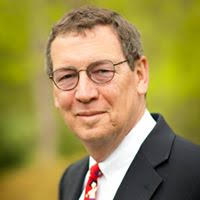 Progressive Voice is a weekly opinion column. The views and opinions expressed in the column are those of the individual authors and do not necessarily reflect the views of their organizations or ARLnow.com.
Progressive Voice is a weekly opinion column. The views and opinions expressed in the column are those of the individual authors and do not necessarily reflect the views of their organizations or ARLnow.com.
By Reid Goldstein
With high school, middle school and a portion of elementary school boundary adjustments behind us, this is a good time to reflect on the recent boundary processes and consider how we can collectively improve future ones.
There will be a continuation of the elementary boundary process in 2020, and boundary adjustments will most likely need to be considered more frequently as we grow in 2020-29.
Boundaries help to ensure that we consistently deliver quality instruction and services to all of our students, so the School Board needs to make decisions in the best interest of the entire county. At the same time, we need to be cautious that in improving service delivery, we are not setting neighborhood against neighborhood.
One of the most important priorities for me as we move forward is to leverage the success of all of our schools and to build a community sense of ownership. We want the community to understand that they own all APS schools, not just the ones closest to them or the ones they currently attend. Recognizing that they all provide excellent resources for student learning and are places to come together will go a long way to avoid communities fighting one another.
In any boundary process, I think it is also important to keep communicating the complex interplay among:
- Arlington Public Schools (APS) staff who analyze enrollment data and propose changes;
- the community, which gives feedback on staff’s data, assumptions and proposals; and
- the School Board, which holds responsibility to make a decision that optimizes the present and prepares for the future.
During the past boundary processes, all Board members heard input from myriad individuals, PTA representatives, teachers and advisory commissions during open office hours, Board meetings, work sessions, over coffee, on phone calls and via email. Here are some of the lessons I have taken and my thoughts on how Board leadership can guide in the future.
The first lesson is that change happens, but it happens differently in different locations. Many think we can accommodate growth without affecting the current situations. That is not realistic. Leveling enrollment across boundaries is one of the most cost-effective tools we have. After planning, siting, funding and constructing new facilities to reduce crowding, then boundary changes are a necessary step in the process to alleviate overcrowding.
Second, the Board needs to find ways to better educate the community about the six considerations in the APS boundary policy (Policy B-2.1). The six considerations (efficiency, proximity, stability, alignment, demographics and contiguity) are not ranked, and sometimes they collide with each other; not all are 100 percent achievable in any decision.
Third, we need to continue to find new strategies for communication with families about the boundary deliberations. Despite the time devoted to discussing the pros and cons of various options, boundary processes can become muddled and contentious. I would like to see:
- More engagement with the community using the County Council of PTAs (CCPTA) and the cadre of parent ambassadors we have at every school. I believe community engagement through these channels can make options and outcomes more understandable.
- Greater appreciation by the School Board and staff that people have carefully calibrated lives. It has taken families months to arrange child care, transportation and work schedules, and school changes can be disruptive. The process is not simply about numerical balancing.
- APS staff proposals with full supporting data and explanations, so the community can see the basis for proposals. Data and assumptions can often change, but we need well-scrubbed proposals and robust community response.
- Avenues for families to connect and engage with their new school community. As soon as the boundary process starts, then “Meet the Principal” sessions and PTA Leadership Nights can provide tangible experiences for families to allay fears and confusion. Families can find great educational experiences everywhere! That’s why Arlington’s enrollment is booming.
- Everyone promoting civility in discussing boundary options. There are many ways to express alternative ideas, disagreement and dissent while modeling civil and respectful behavior for our children and neighbors.
I am looking forward to future boundary discussions that integrate the best actions and outcomes of the Board, the community and APS staff. I invite you to join us in this journey.
Reid Goldstein has been an Arlington resident since 1985, School Board member since 2016, and its chair since July 2018. His opinions do not signify APS policy or practice, or a consensus of the School Board.

